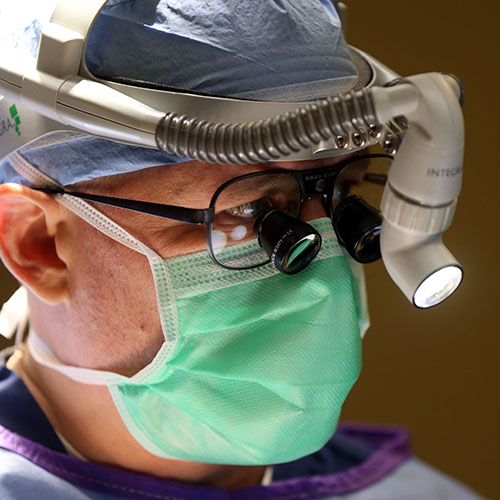Pain Management Specialist Partner
Pain management physicians’ primary goal is to control their patient’s pain and keep it at a manageable level. In the setting of acute pain, especially when the source is spine related, complete elimination of the pain is often possible. For the majority of patient’s who suffer with chronic pain, however, narcotic medications continue to be the mainstay of treatment. Peripheral nerve surgery represents an option for the pain management physician to consider in cases where all reasonable pain management interventions have failed to provide adequate pain control for the patient.
Within the larger pool of patients who suffer from chronic pain, there is a certain subset of patients whose pain derives from injury or ongoing compression of peripheral nerves. Narcotic pain medication does not work well for controlling pain when the source is a compressed or damaged peripheral nerve. At the most basic level, peripheral nerve pathology represents some type of physical or mechanical process that is generating the pain signal. This may take the form of mechanical compression on the nerve by surrounding tissue, direct damage to the nerve itself resulting in a painful neuroma, or entrapment and tethering of a nerve in scar tissue which then subjects the nerve to painful stretch-traction forces as the body moves.
Every part of the human body derives sensory innervation from some type of peripheral nerve. When someone experiences acute pain, there is usually some kind of identifiable pathology (i.e. a laceration, broken bone, etc.) to explain the source. Any time the human body is subjected to trauma (this includes surgery), the opportunity arises for a nerve injury or compression to develop. Once this happens, the primary function of the nerve is to continually send pain signals to the brain resulting in the perception of constant pain.
In many cases, once no obvious source for the pain can be located, the focus shifts from trying to discover the identity of the pain generator, to simply treating the pain itself. The patient is surrendered to the ravages of chronic pain with the hope of minimizing it’s toll through pain medication. For many patients who fall into this category, the source of the chronic pain is some type of peripheral nerve pathology. Due to a general lack of familiarity with peripheral nerve anatomy, as well as the presenting signs and symptoms of peripheral nerve pathology, most doctors struggle to even recognize when pain is likely due to an injured peripheral nerve. Combine this with the fact that there is currently no reliable, readily accessible, objective imaging or testing modality that is capable of otherwise objectively pinpointing peripheral nerve lesions and it makes for a whole category of chronic pain that simply flies under the radar of treating physicians.

The current medical system revolves around the idea that all chronic pain is basically the same thing and, with few exceptions, is primarily treated with pain medication. In reality, however, many difficult chronic pain problems stem from correctable pathology involving one or more peripheral nerves. The trick is to identify which patients have pain due to a correctable peripheral nerve lesion and which do not.
Bottom Line – peripheral nerve surgery is certainly not a panacea for all types of chronic pain. It is, however, far and away the best option for patient’s who are dealing with severe chronic pain due to some type of peripheral nerve pathology. It is really the only therapeutic option which offers the possibility of completely eliminating the problem, allowing patients to return to a normal quality of life.
